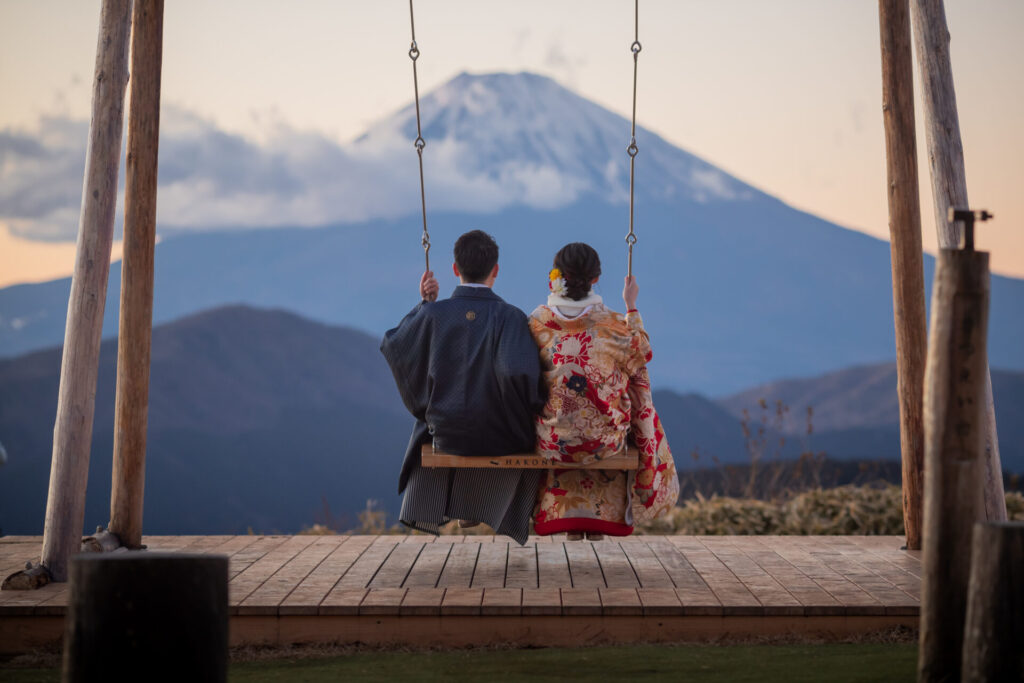
Embrace Japan’s timeless beauty for a once-in-a-lifetime experience.
This guide explains the differences between the traditional bridal outfits—Shiromuku, Irouchikake, and Hakama—and shows how to plan an elegant kimono photo shoot in Japan.
What Is a Kimono Wedding? The Allure of Traditional Attire
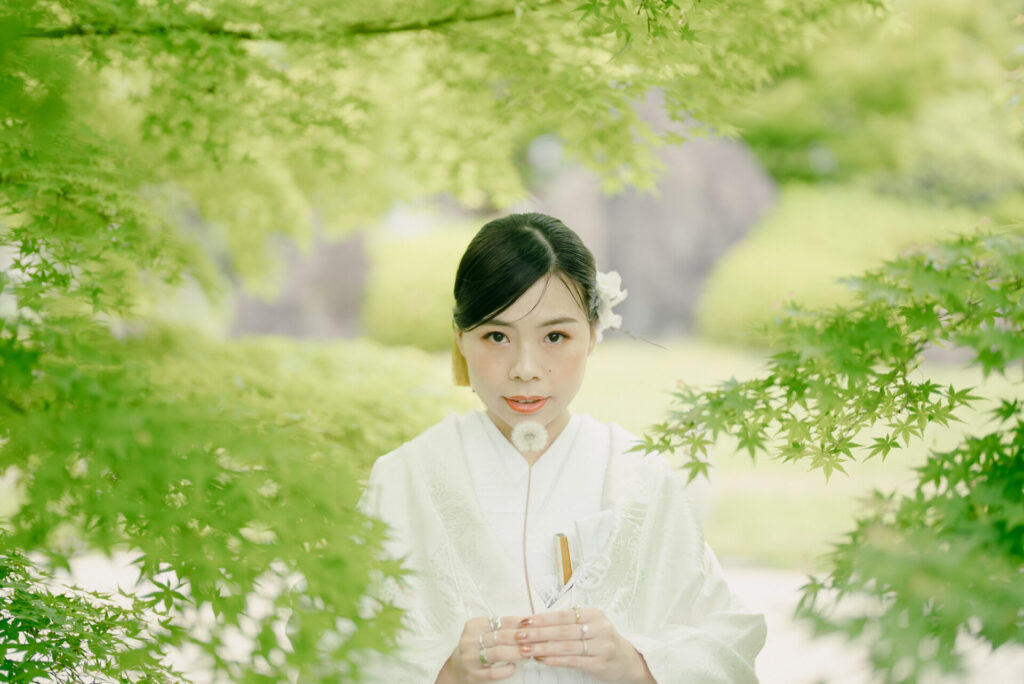
Locations steeped in culture—Kyoto’s shrines and temples, historic districts, and classic gardens—are perennial favorites for kimono shoots.
Professional studios coordinate photographers, kimono dressers, and hair-makeup artists to harmonize the bride’s beauty with Japan’s scenery.
A Timeless Tradition (Meaning in Weddings)
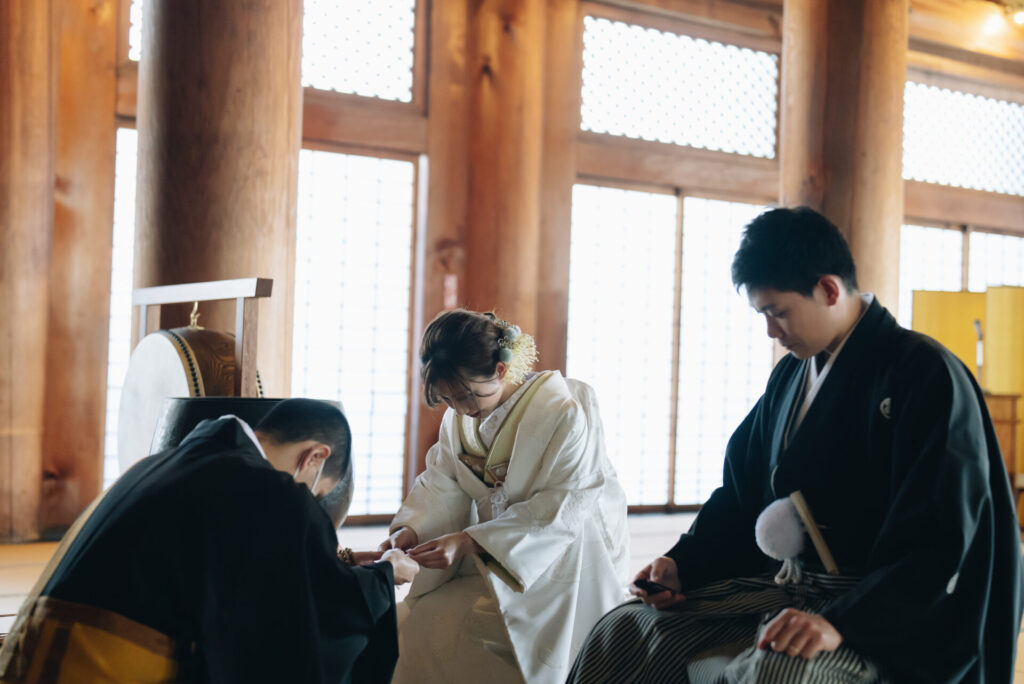
Wearing kimono in weddings symbolizes family bonds and a blessed new beginning.
Shiromuku and Irouchikake are more than garments; they represent a bride’s step into a new chapter and reflect Japan’s enduring aesthetics.
Growing Popularity in the Chinese-Speaking World
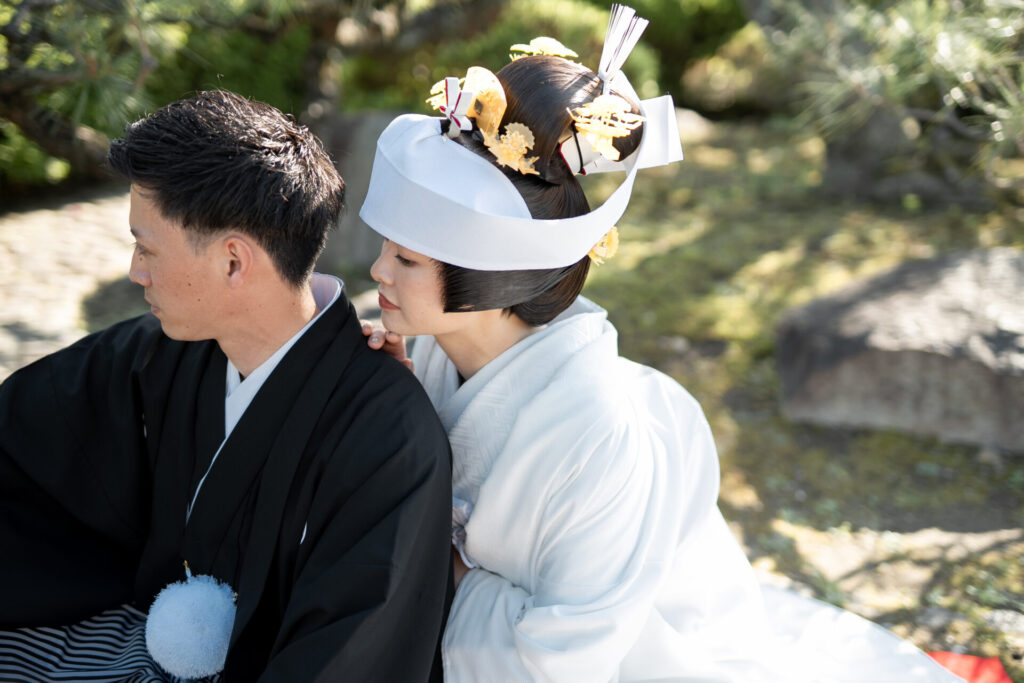
Kimono weddings—often called “Japanese-style wedding photos”
—are increasingly popular in Taiwan and Hong Kong for their refined elegance and ceremonial atmosphere.
Types and Names of Kimono Wedding Attire
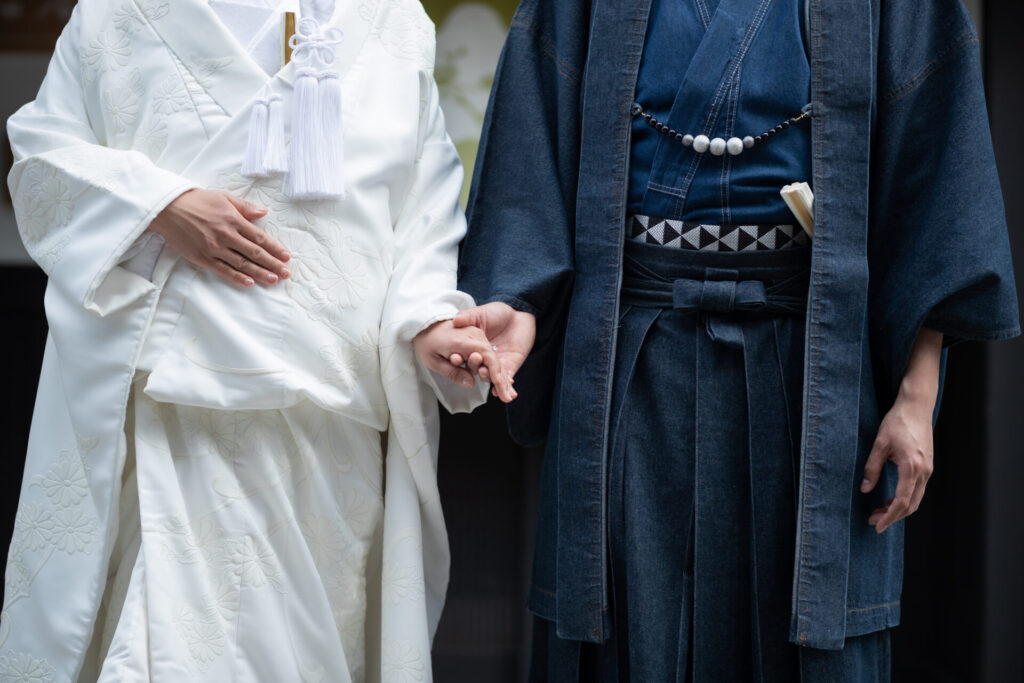
Common styles include Shiromuku, Irouchikake, and Hikifurisode.
Today, Shiromuku and Irouchikake are the mainstream choices, while grooms typically wear Hakama. Below is a closer look at key items and terminology.
Names of Bridal Items
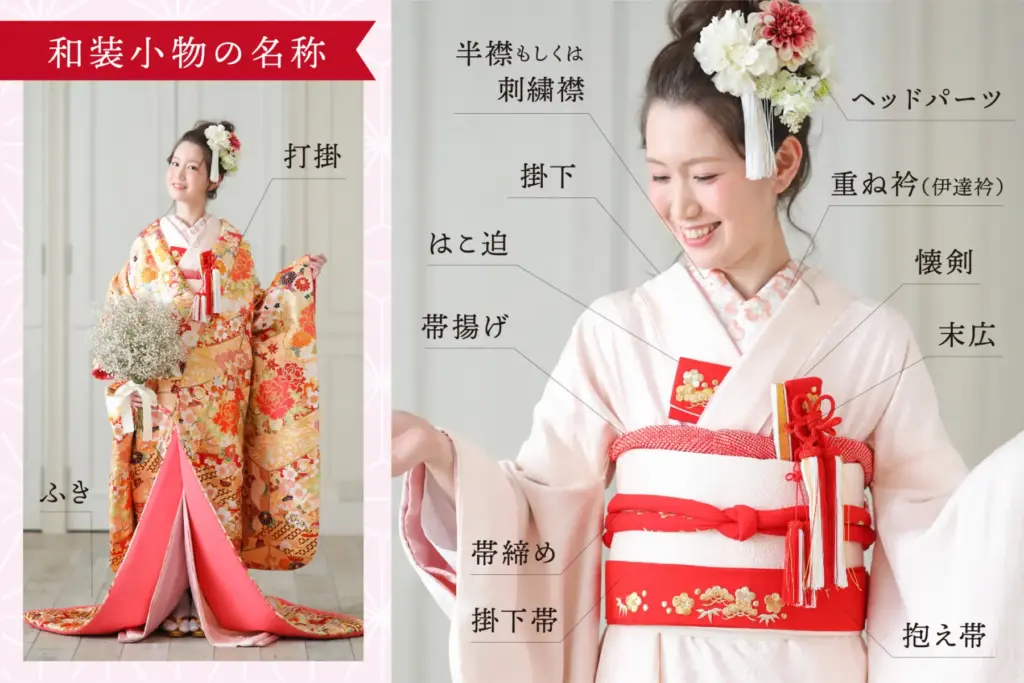
Shiromuku and Irouchikake consist of multiple layers and accessories.
The outer Uchikake displays the prominent colors and patterns and is the visual focus in photos.
Beneath it is the Kakeshita, and coordinated accessories around the collar and chest define the overall look. Many Japanese studios offer set packages and optional upgrades for accessories.
Shiromuku: The Pure White Beginning
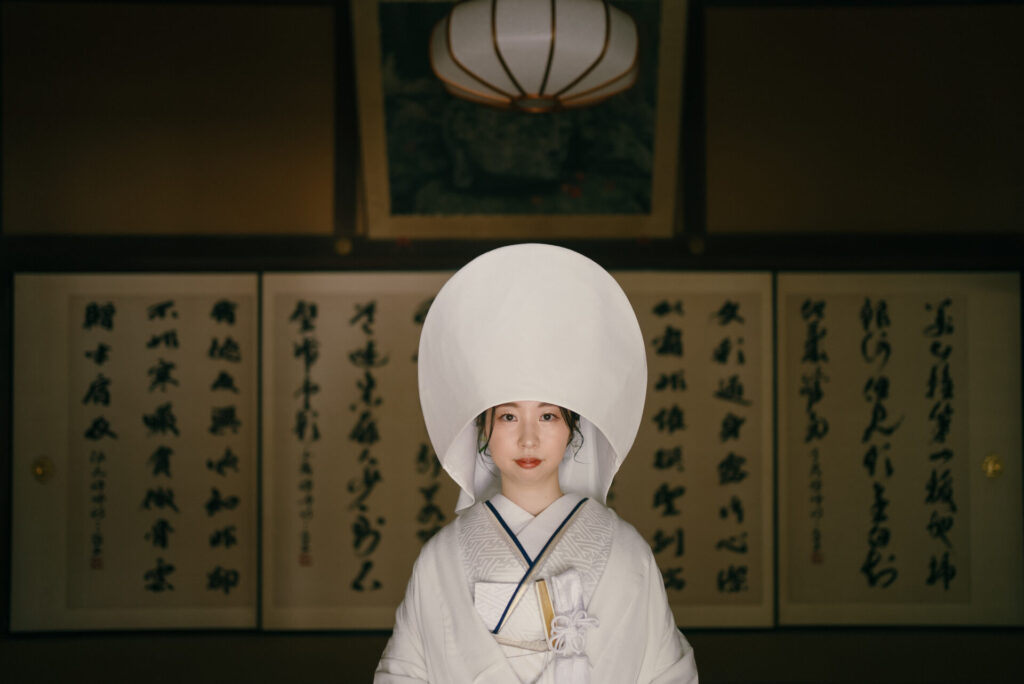
White signifies purity and a fresh start as the bride joins her new family.
From inner layers to outer robe and accessories, Shiromuku is entirely white.
Traditional headpieces such as Watabōshi or Tsuno-kakushi express elegance and modesty—still beloved in Shinto weddings today.
Design & Hairstyle Notes
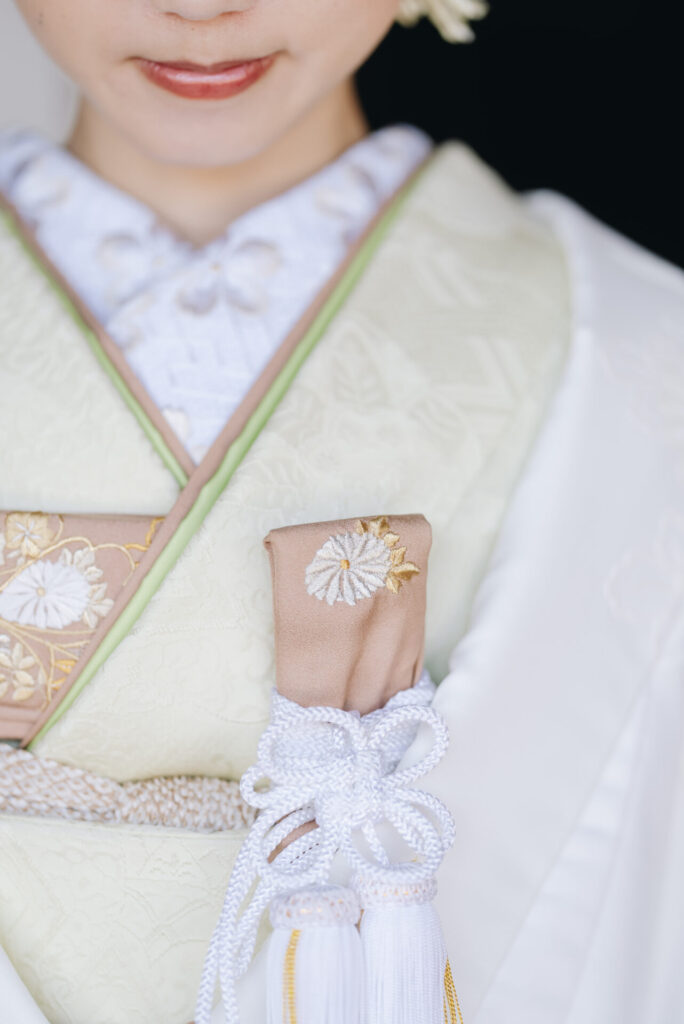
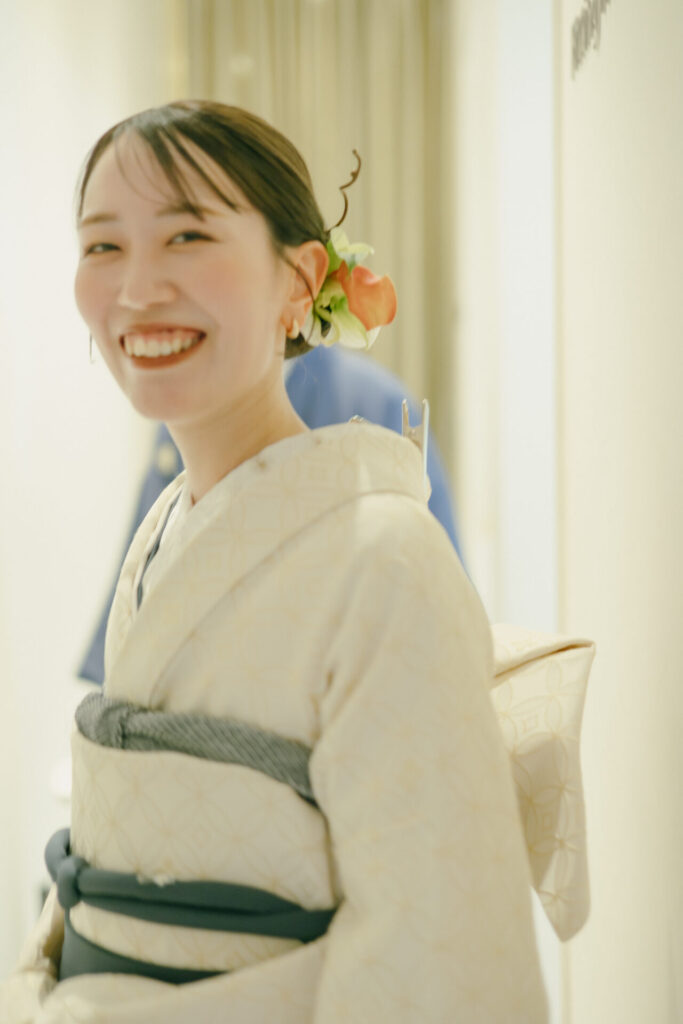
Fabrics often feature auspicious motifs like cranes, phoenixes, and pine-bamboo-plum.
Collar colors and accessory placement also shape the impression.
See more styles here:
Irouchikake: A Colorful Celebration
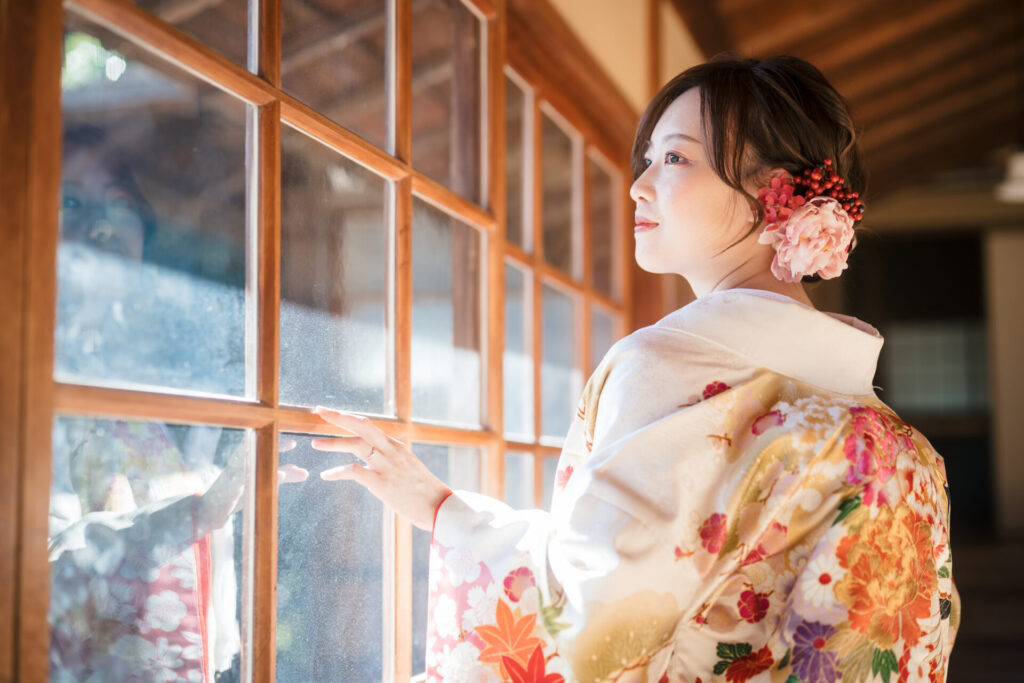
Historically worn after changing from Shiromuku, Irouchikake signified the bride’s welcome into her new family.
Originating from the opulent outer garments of the Edo period, it features lavish embroidery and gold or silver foils in vivid hues that celebrate happiness and prosperity.
Meanings of Colors & Patterns
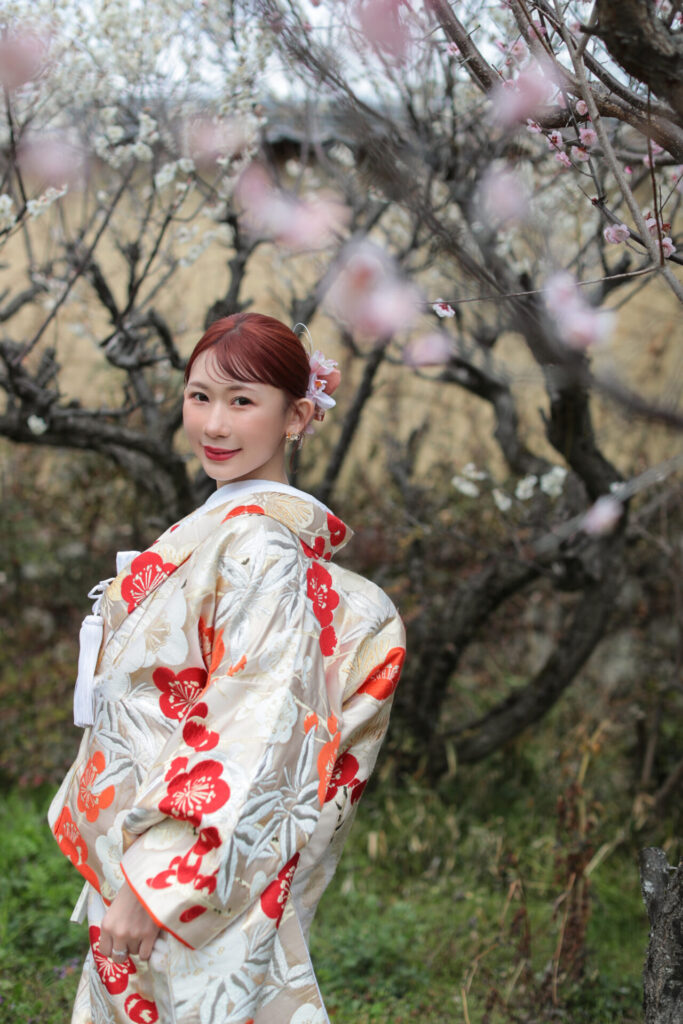
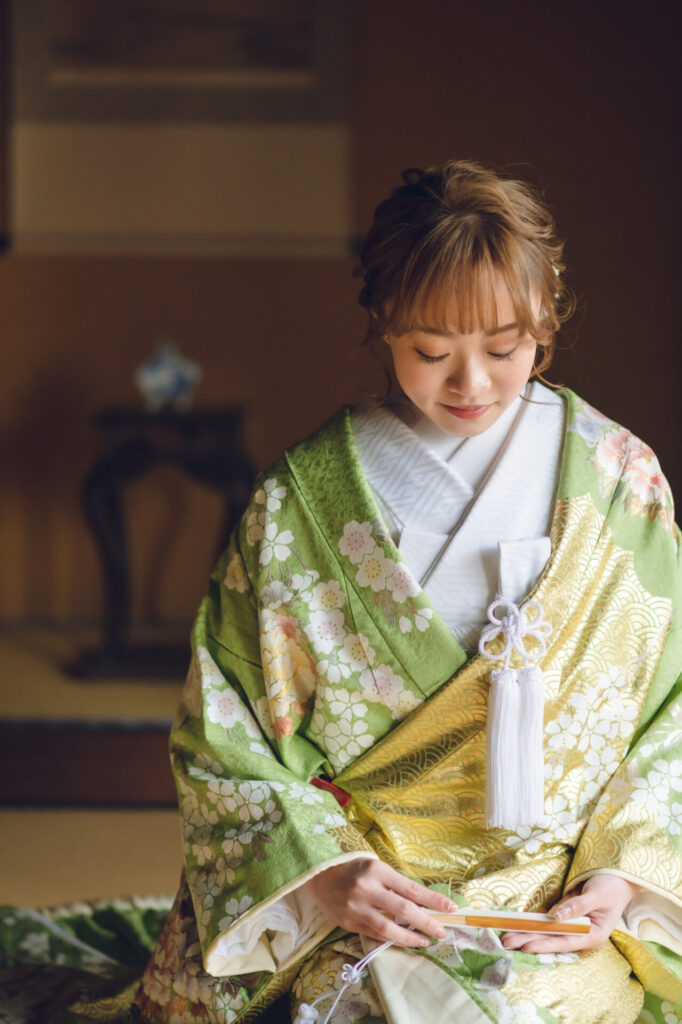
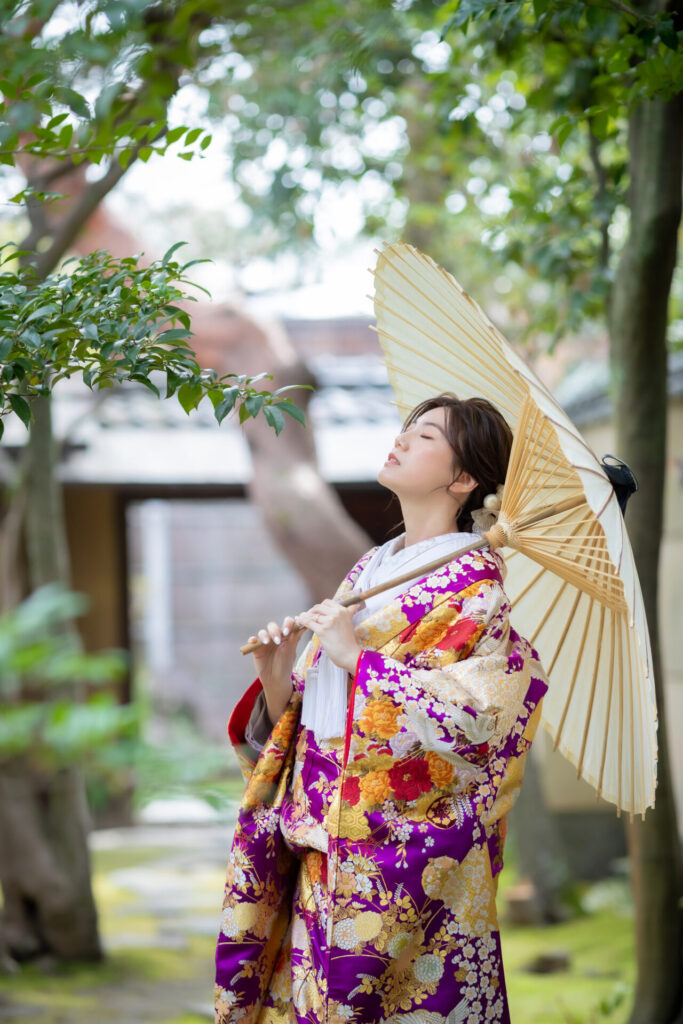
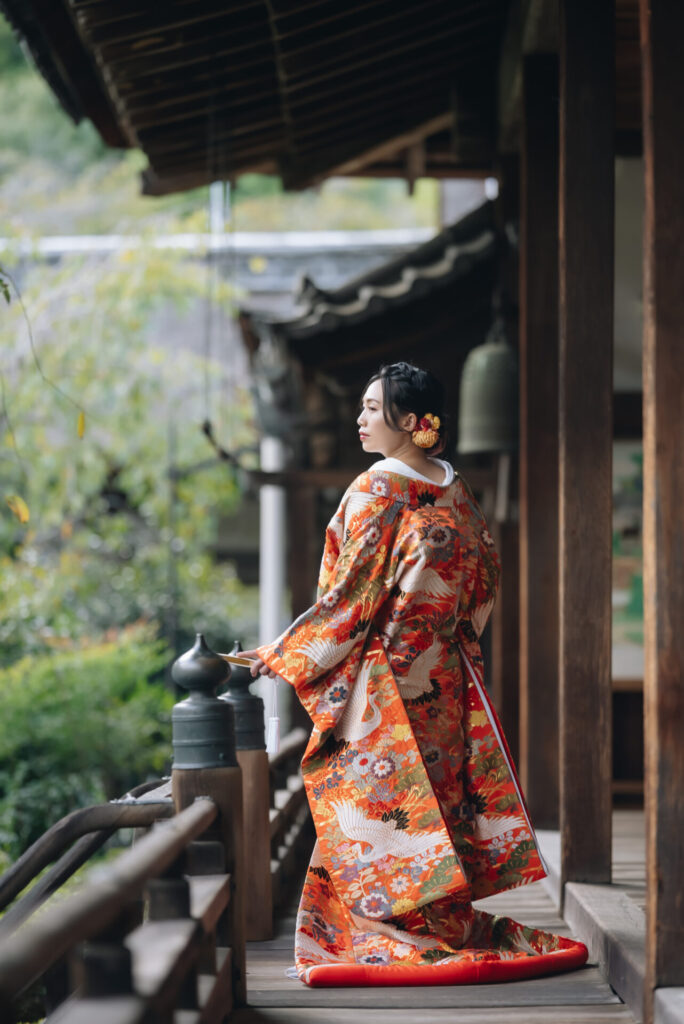
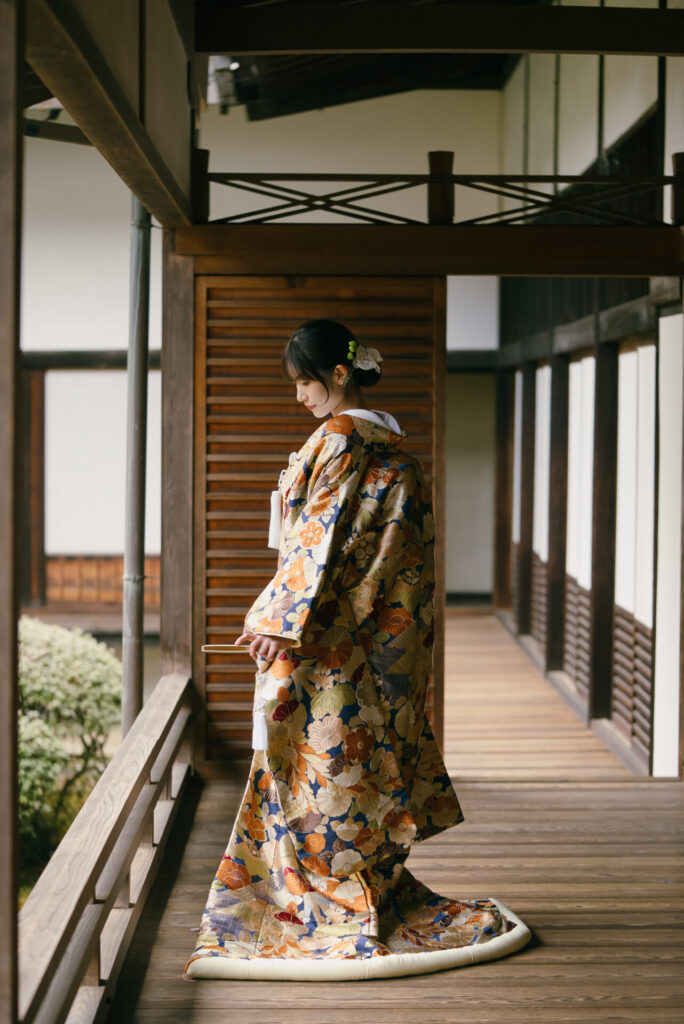
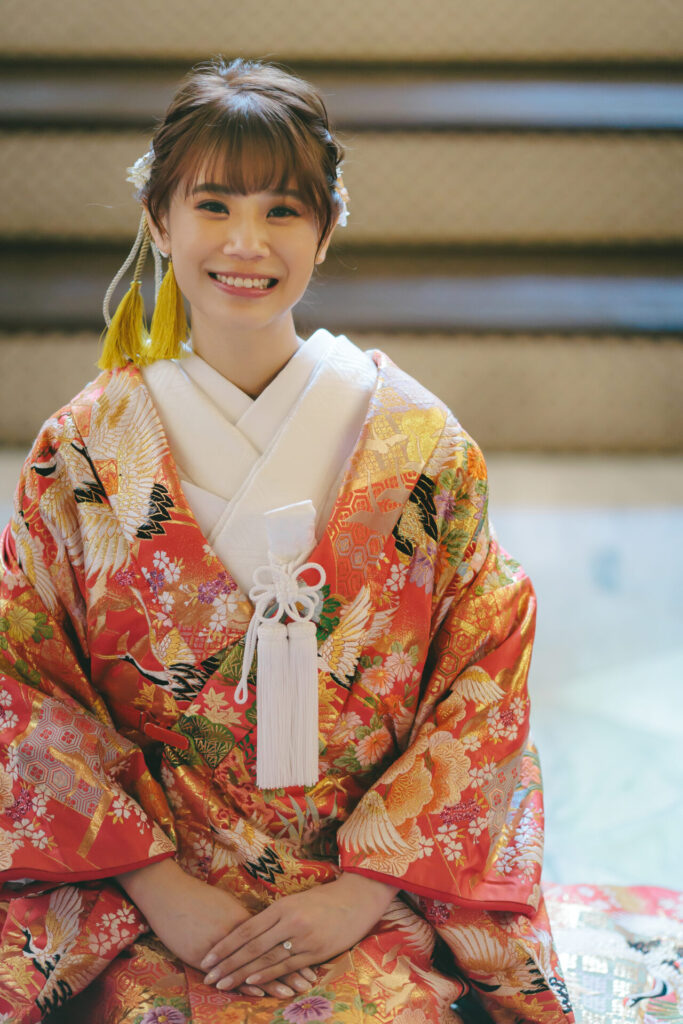
Red conveys protection and joy; gold and silver symbolize abundance.
Popular auspicious patterns include cranes, turtles, pine-bamboo-plum, and imperial carts.
Modern palettes and motifs are also available to suit personal style.
See more styles here:
Hairstyles that Complement the Kimono
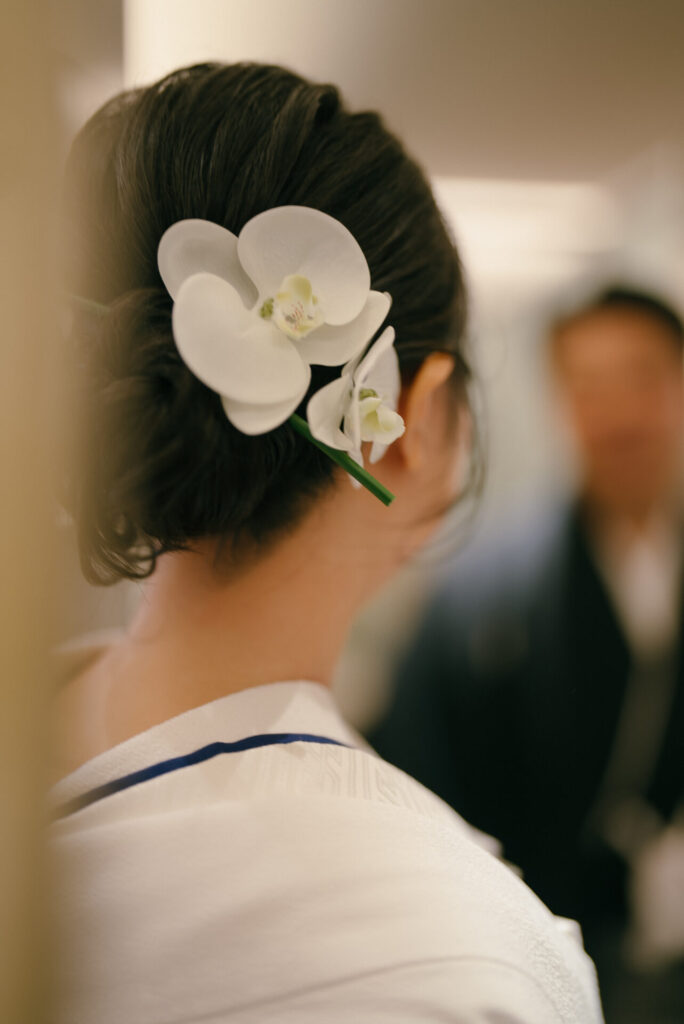
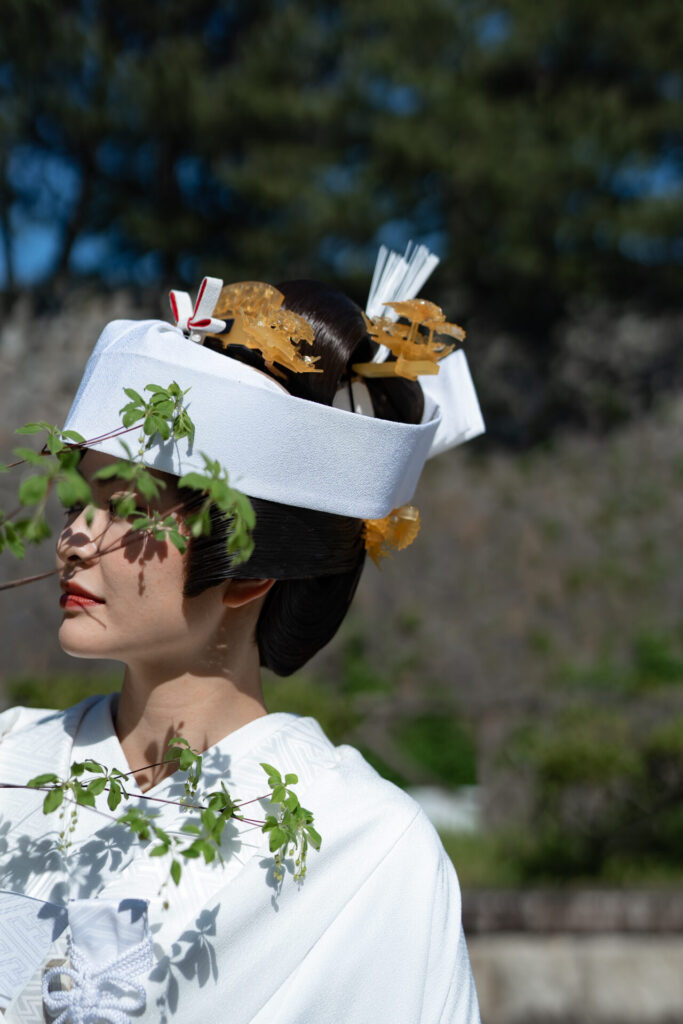
Hairstyle strongly influences the overall impression.
Besides traditional looks with Watabōshi or Tsuno-kakushi, modern updos with fresh flowers, gold leaf, or tulle are popular.
Choose neat, elegant styles for Shiromuku and fuller, glamorous looks for Irouchikake.
Recommended Locations in Japan
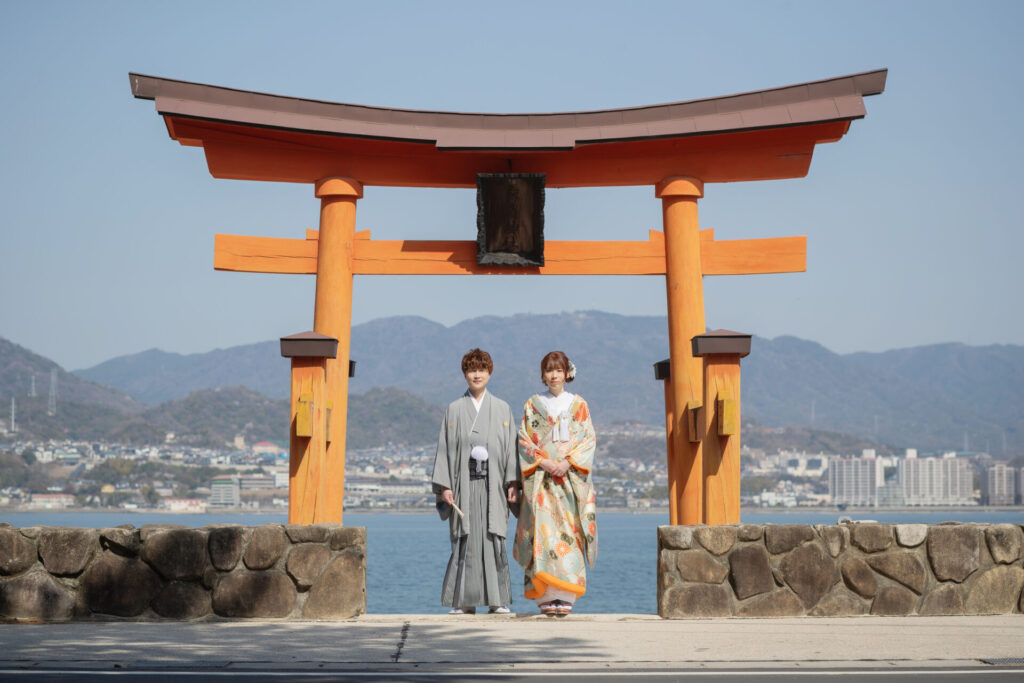
Japan offers countless locations where traditional architecture meets seasonal beauty. From Kyoto’s shrines to Tokyo’s gardens and the iconic view of Mt. Fuji, every setting brings out the elegance of kimono.
1. Shrines & Temples — Serenity and Tradition
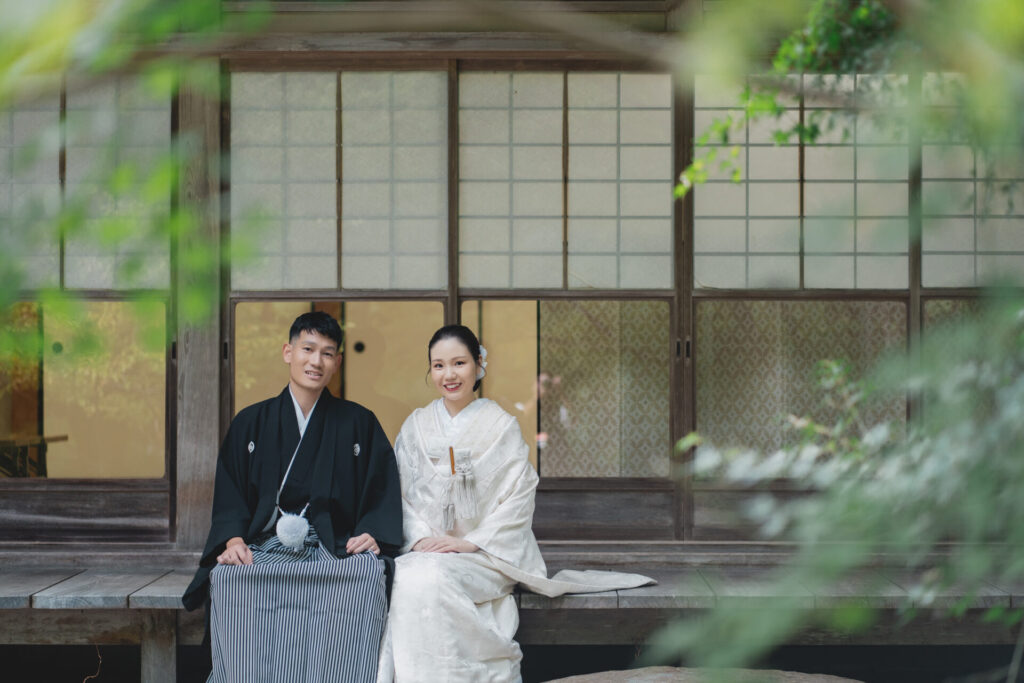
Timeless sanctuaries with vermilion torii and grand halls beautifully frame Shiromuku and Irouchikake.
- Fushimi Inari Shrine — Located in Kyoto Prefecture, famous for its endless rows of bright vermilion torii gates.
- Hasedera Temple — Found in Nara Prefecture, also known as the “Temple of Flowers,” with blossoms in every season.
- Konkai Komyoji Temple — Situated in Kyoto Prefecture, a peaceful temple renowned for its cherry blossoms and autumn foliage.
- Enko-ji Temple — Nestled in Kyoto Prefecture, surrounded by lush gardens that beautifully complement its serene halls.
- Bishamon-do Temple — Perched in Kyoto Prefecture’s Yamashina Hills, offering breathtaking cherry and maple views in spring and fall.
2. Japanese Gardens — Refined Beauty Through the Seasons
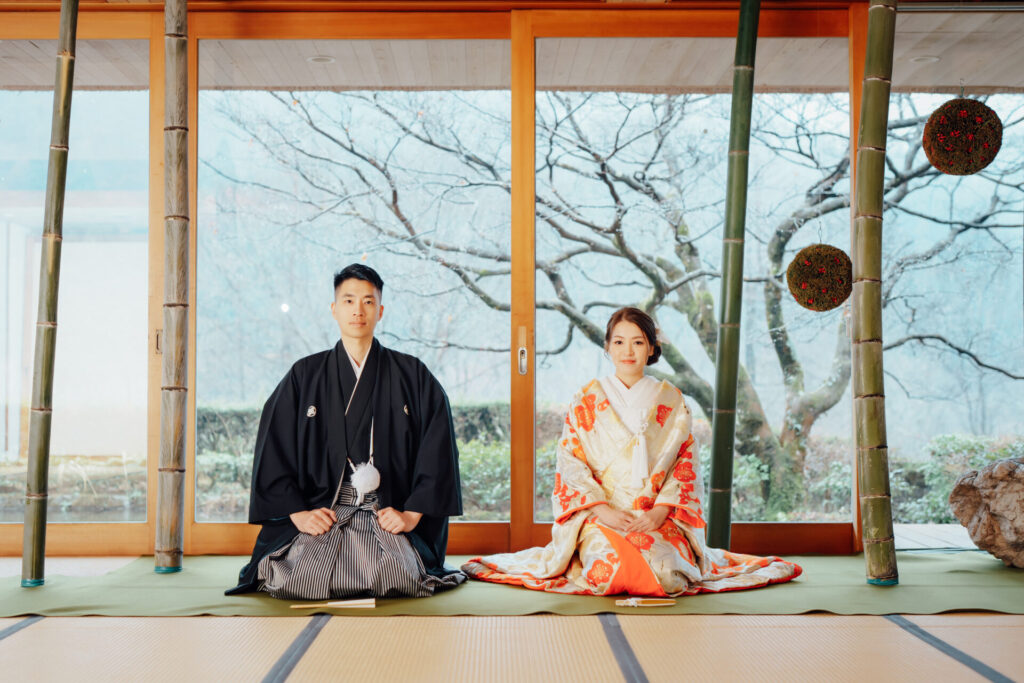
Stroll gardens highlight spring blossoms, summer greens, autumn foliage, and winter snowscapes—perfect with intricate kimono textiles.
- Daisen Park — One of Japan’s designated Historic Parks, located in Osaka Prefecture.
- Korakuen Garden — One of Japan’s Three Great Gardens, found in Okayama Prefecture.
- Todoroki Valley — A rare green ravine within Tokyo Metropolis, offering a calm natural escape.
- Zuishin-in Temple Garden — In Kyoto Prefecture, featuring both vibrant interiors and a traditional garden.
- Rokkaen Residence — A beautifully preserved blend of Japanese and Western architecture in Mie Prefecture.
3. Old-Town Streets — Atmosphere Rich in Heritage
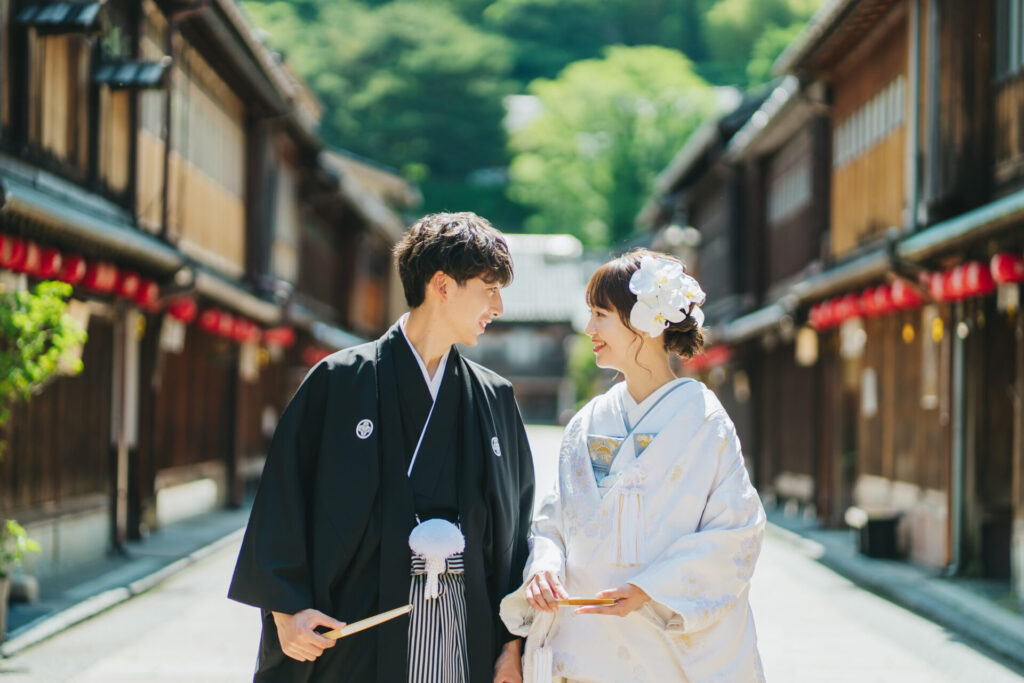
Stone-paved lanes and wooden townhouses feel frozen in time.
- Higashi Chaya District — In Ishikawa Prefecture, a historic teahouse district lined with traditional wooden facades.
- Yasaka Pagoda (Ninenzaka Area) — Located in Kyoto Prefecture, where cobblestone streets and machiya townhouses capture the essence of old Kyoto.
- Dogo Onsen & Dogo Park — In Ehime Prefecture, a nostalgic hot-spring area said to have inspired Spirited Away.
- Imai-cho District — Situated in Nara Prefecture, preserving Edo-period townhouses and lattice-window streets.
- Kurashiki Bikan Historical Area — In Okayama Prefecture, where white-walled storehouses and willow-lined canals create a classic Japanese scene.
4. Nature & Landscape — Breathtaking Romance Outdoors
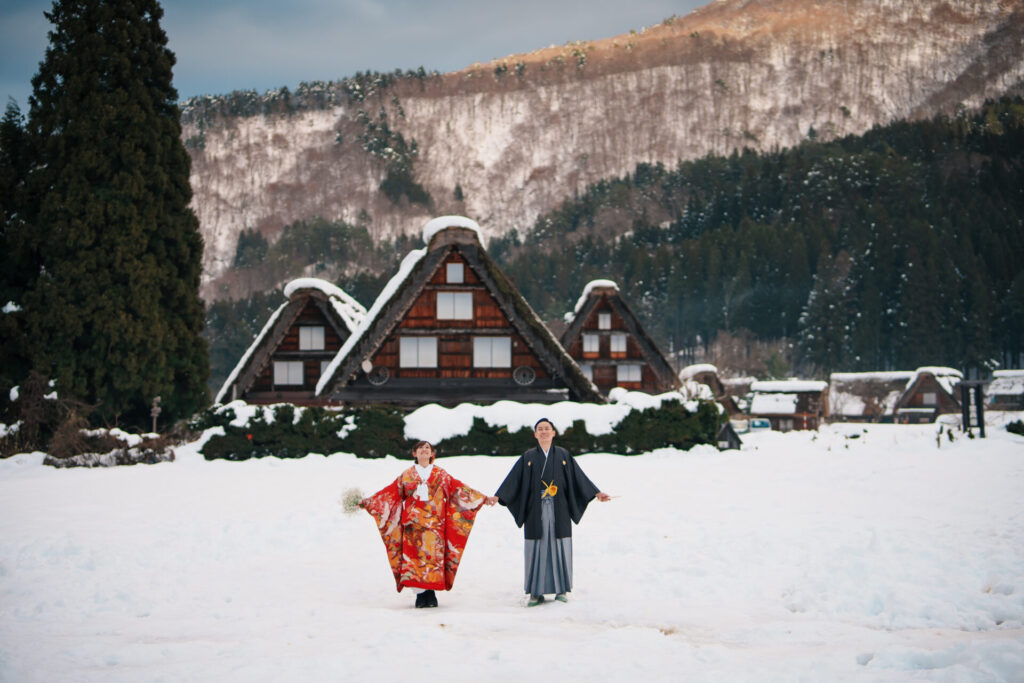
Seas, mountains, lakes, and iconic Mt. Fuji create cinematic scenes for kimono.
- Mount Fuji — Japan’s most iconic natural landmark, straddling Yamanashi and Shizuoka Prefectures.
- Shirakawa-go Village — In Gifu Prefecture, a UNESCO-listed hamlet of thatched houses blanketed by snow in winter.
- Nakajima Park — A tranquil park in Hokkaido, combining nature and cultural heritage in the heart of Sapporo.
- Nara Park — Located in Nara Prefecture, a scenic park where you can even photograph with friendly deer.
- Miyajima Island — In Hiroshima Prefecture, famous for its floating torii gate and harmonious coastal scenery.
La-vie Factory’s Photo Plans in Japan
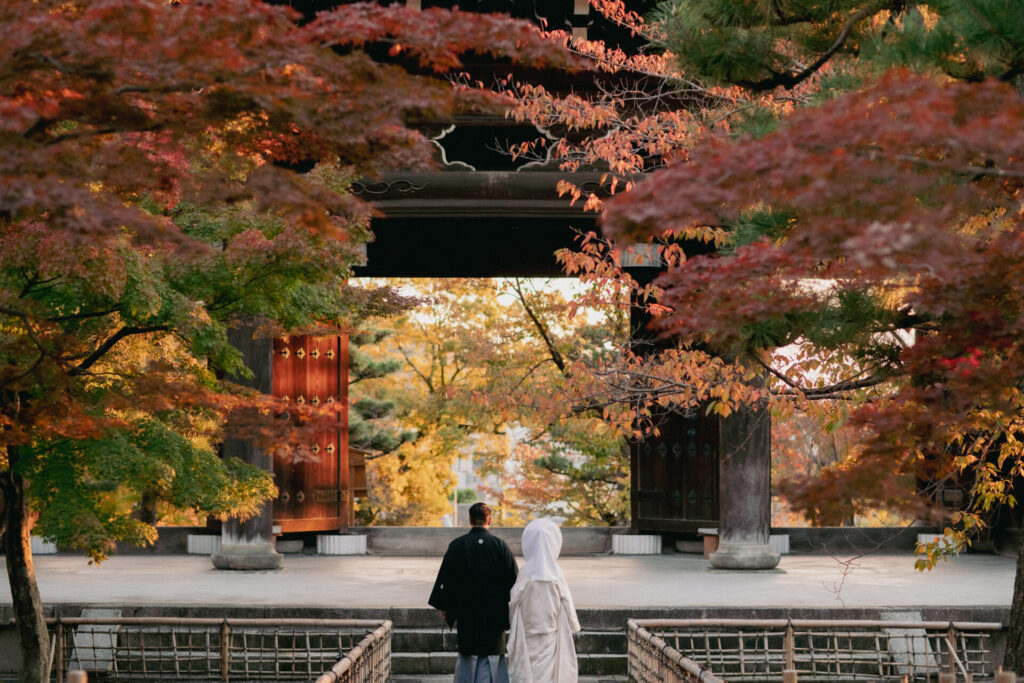
Shooting in Japan lets you experience culture and nature at once.
Working with a local expert is recommended because:
- ・Kimono dressing requires specialized skills and etiquette;
- ・You’ll need changing/makeup space and coordinated transport between locations;
- ・Many heritage sites require permits or have time restrictions.
Why La-vie Factory
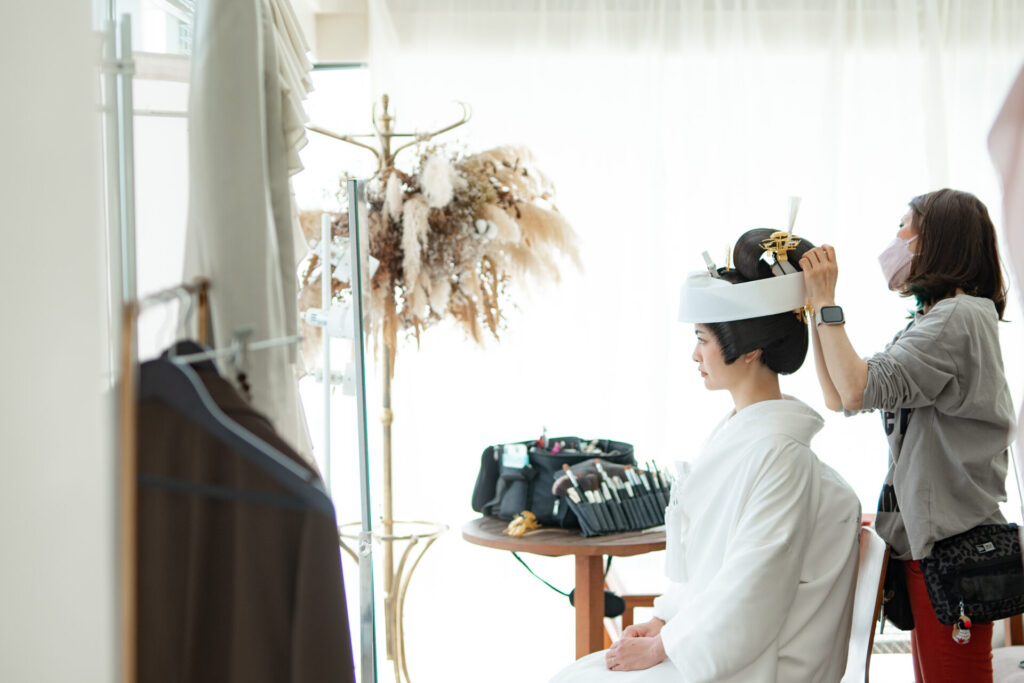
With 30 years of experience across Japan, La-vie Factory handles permits, reservations, and logistics for shrines and temples with ease.
English- and Chinese-speaking staff support you from consultation to shooting day.
Packages include kimono rentals, hair-makeup, multilingual support, and optional add-ons—so overseas couples can enjoy a seamless, memorable experience.
Step-by-Step Booking (for Overseas Couples)
- Inquiry
- Online consultation (EN/ZH available)
- Decide your plan & outfits
- Hair-makeup rehearsal upon arrival
- Photo shoot
- Data delivery
What’s Included
Typically: outfit rental, dressing, hair-makeup, shooting, data, and interpreter.
Optional: albums, extra locations, and more—customized to your style and budget.
For details, see La-vie Factory’s plans.
Please check our website for available plans and schedules.
Q&A
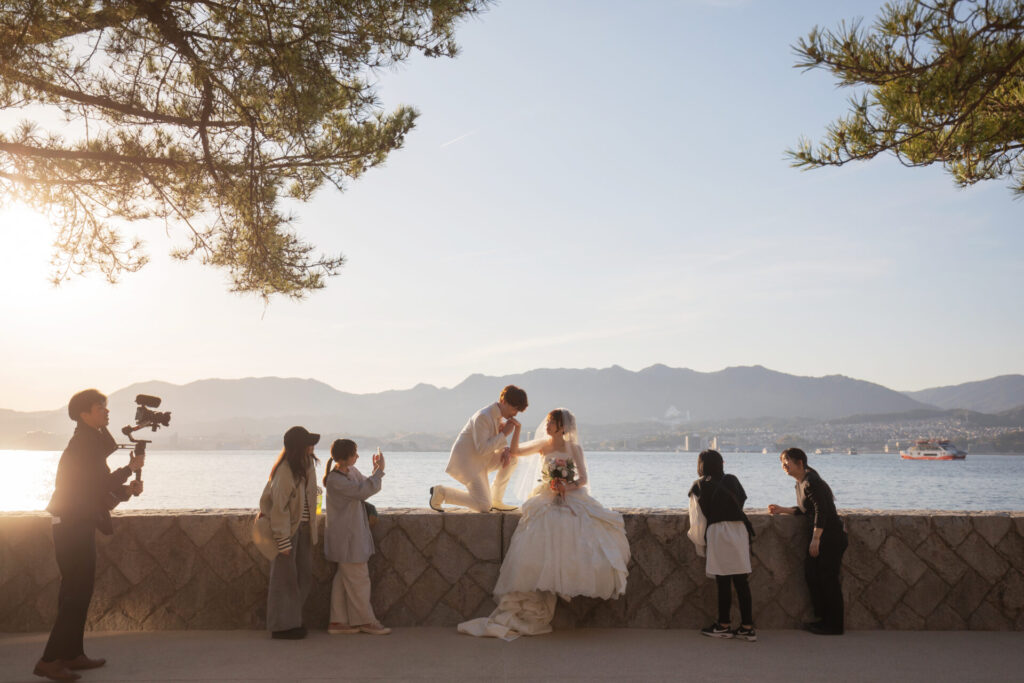
Q、When is the best season?
A、Spring cherry blossoms, lush summer greens, autumn foliage, and winter snowscapes—all are beautiful. Book early for peak seasons.
Q、Is language a problem?
A、Our English- and Chinese-speaking staff (and interpreters) support you from rehearsal to the shooting day.
Q、How far in advance should I book?
A、For spring and autumn, we recommend booking 6–12 months ahead.
For more Q&A, please visit this page.
Make Your Special Moment Last Forever
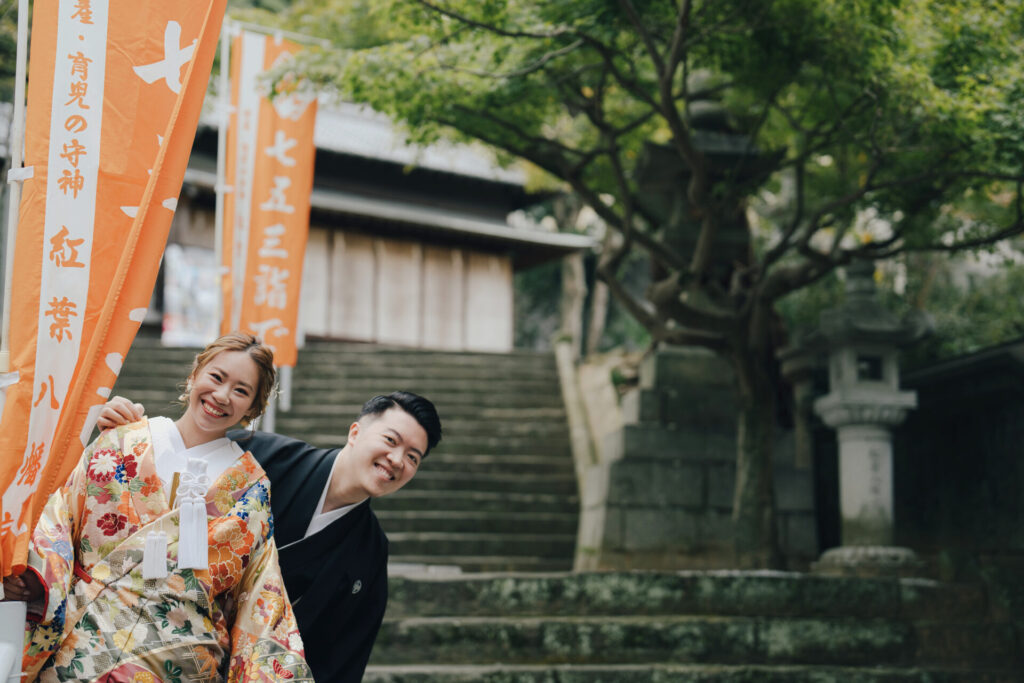
A kimono wedding photo is more than a keepsake—it’s an immersive experience of Japan’s beauty and culture.
The purity of Shiromuku, the splendor of Irouchikake, and the dignity of Hakama—each carries a once-in-a-lifetime promise.
GET IN TOUCH
ーーー
